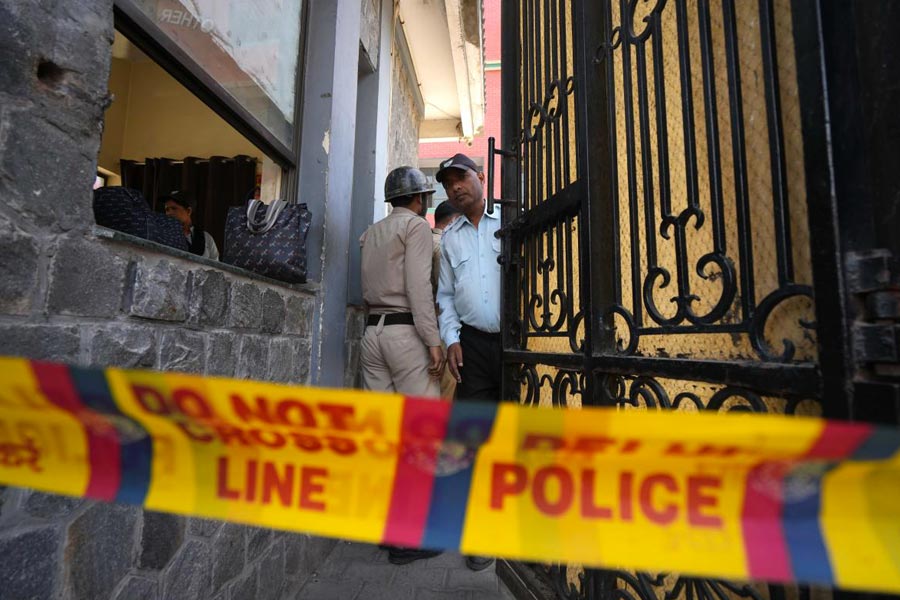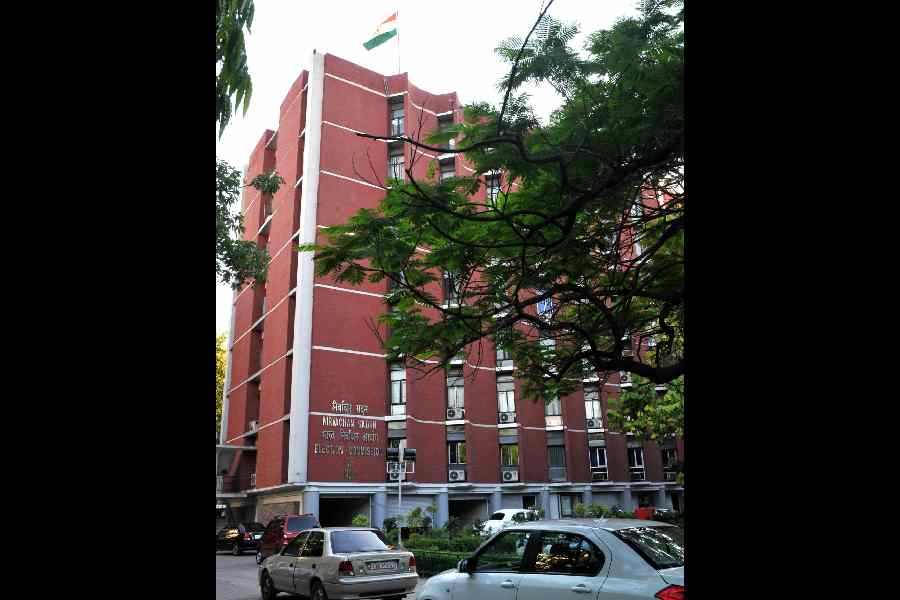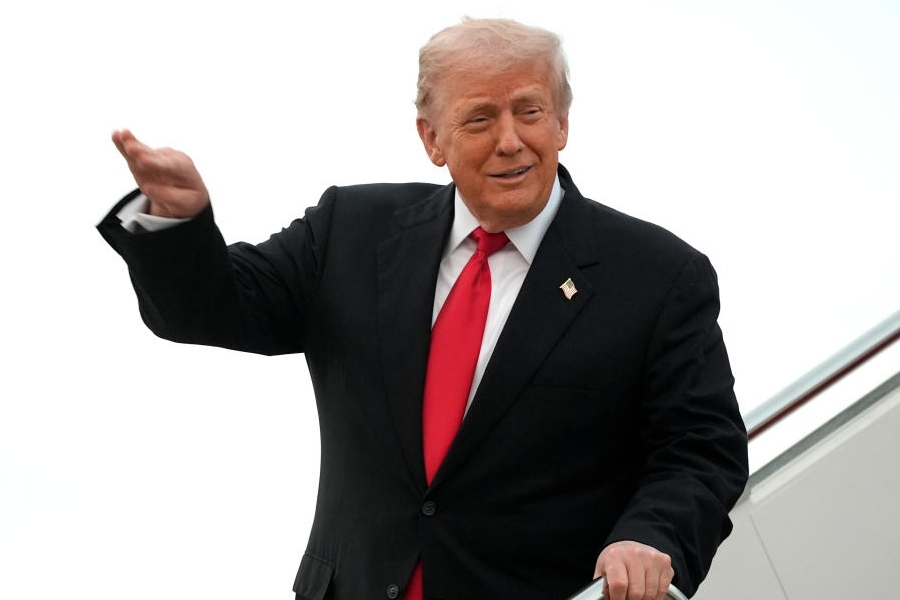.jpg)
New Delhi, Dec. 16: Exactly 45 years ago this Victory Day, the US Seventh fleet that Vice-Admiral Joseph P. Aucoin commands today was steaming into the Bay of Bengal threatening to bomb India.
Marking India's biggest victory in war, about 93,000 Pakistani soldiers, most of them in Dhaka, were surrendering to Indian forces on December 16, 1971.
Today Aucoin is in New Delhi, a dreaminess in his eyes as he remembers the taste of his favourite north Indian gravy whose name he cannot quite recall. It sounds like butter chicken. He is being hosted by the Indian navy chief and his friend, Admiral Sunil Lanba.
Aucoin is the 25th chief since 1971 of the US Seventh Fleet, which was ordered by President Richard Nixon into waters off India for potential intervention in the war that led to the birth of Bangladesh. The then fleet commander, Vice-Admiral William P. Mack, died in 2003.
"Yes, if you don't follow history, history tends to repeat itself," the current Seventh Fleet commander, Aucoin, said in New Delhi this afternoon.
Aucoin said: "Look where we have come now: we are working closely as two democracies. We've had one of the largest joint exercises in 2015 and in my current visit we are talking about the next big one."
The Seventh Fleet's Task Force 74 had in the lead the 75,000-tonne USS Enterprise carrier - the largest warship in the world in 1971. TF 74 comprised 10 ships and probably a nuclear submarine.
America's declared intent was to make room for the Pakistani soldiers to flee and probably evacuate them from Chittagong and elsewhere on the Bay of Bengal coast. The task force had set sail from the Gulf of Tonkin on the North Vietnamese and southern Chinese coast.
The TF74 was sweeping into the Bay of Bengal on December 16. The speed of the Pakistani capitulation in what was then East Pakistan took everyone by surprise.
But there was something else that took the Americans by shock. Weeks earlier, Moscow had used a provision in the Indo-Soviet Treaty that then Prime Minister Indira Gandhi had signed with the USSR and activated its Pacific Fleet. As the US flotilla entered the Indian Ocean, a Soviet submarine popped up.
Admiral Vladimir Kruglyakov, who commanded the Soviet Pacific Fleet, wrote later, according to documents declassified by the US state department in 2010: "The chief commander's order was that our subs should surface when the Americans appear. It was done to demonstrate to them that we had nuclear submarines in the Indian Ocean. So when our subs surfaced, they recognised us. In the way of the Americans stood Soviet cruisers, destroyer and atomic submarines equipped with anti-ship missiles... we blocked them and did not allow them to close in on Karachi, Chittagong and or Dacca."
The US Task Force 74 was too late to help Pakistan. It continues to remain in America's Seventh Fleet and is now tasked with its submarine operations. Its boats are likely in the Bay of Bengal next year for the 21st edition of the Malabar series of exercises.
Aucoin says the next set of the series would see expanded drills in submarine-hunting exercises. The US Navy's P8 Poseidon aircraft and the Indian Navy's (imported from the US) P8i maritime surveillance planes would operate jointly. The Malabar exercises are now trilateral with the involvement of the Japanese Maritime Self-Defence Forces (JMSDF).
Aucoin says his main responsibility is to ensure that the Sea Lanes of Communication (SLOC) in the Indian Ocean Region and in the South China Sea remain open. It is the militarisation of the South China Sea that is of immediate concern in his area of responsibility. Even as he is doing that, he is seeing a Bay of Bengal that is also getting more militarised.
Earlier this month, Bangladesh took possession of the first of two Ming-class submarines - its first under-surface platform - from China. It has a maritime dispute with Myanmar to its east.
Three years ago, Bangladesh and Myanmar had mobilised forces. Unlike that dispute, Bangladesh has been able to resolve its maritime boundary with India to its west.
Aucoin says the India-Bangladesh model of maritime dispute resolution possibly holds a lesson for many countries, including those along the South China Sea. China is building and deploying forces in islands it claims or is artificially creating.
"The verdict (of the international arbitration court) was not in best favour of India but India abided by it," notes Aucoin. India accepted the verdict of the international arbitration court even though much of it went against its claims against Bangladesh.

.jpg)








